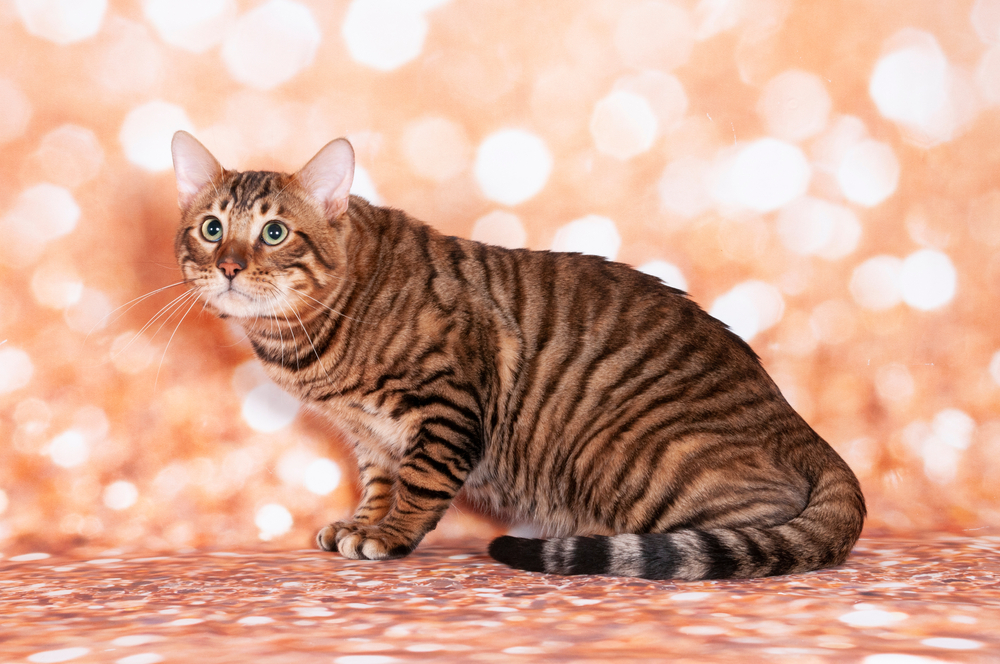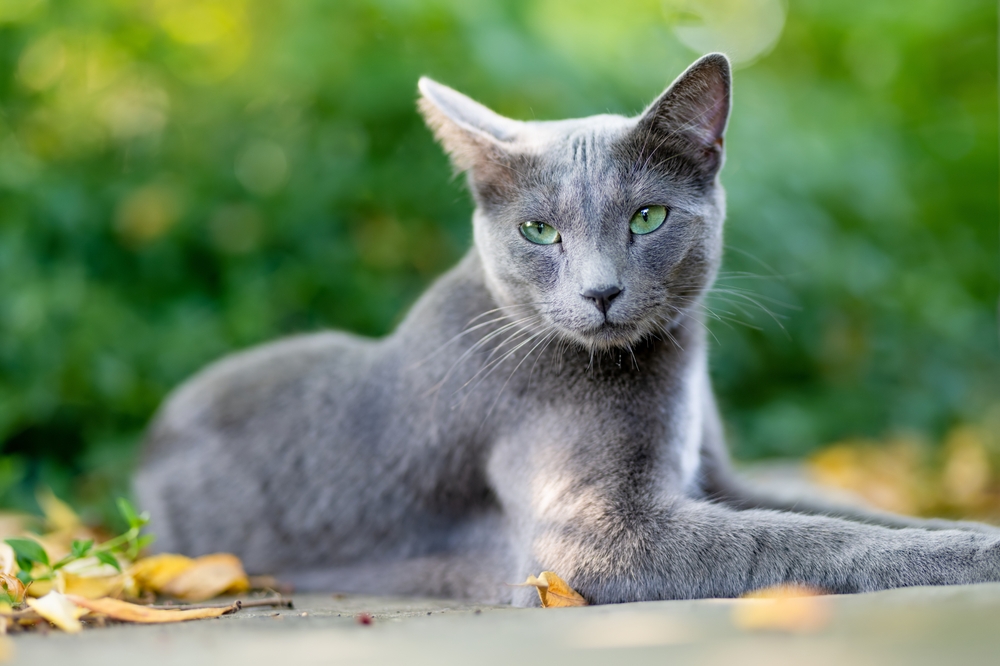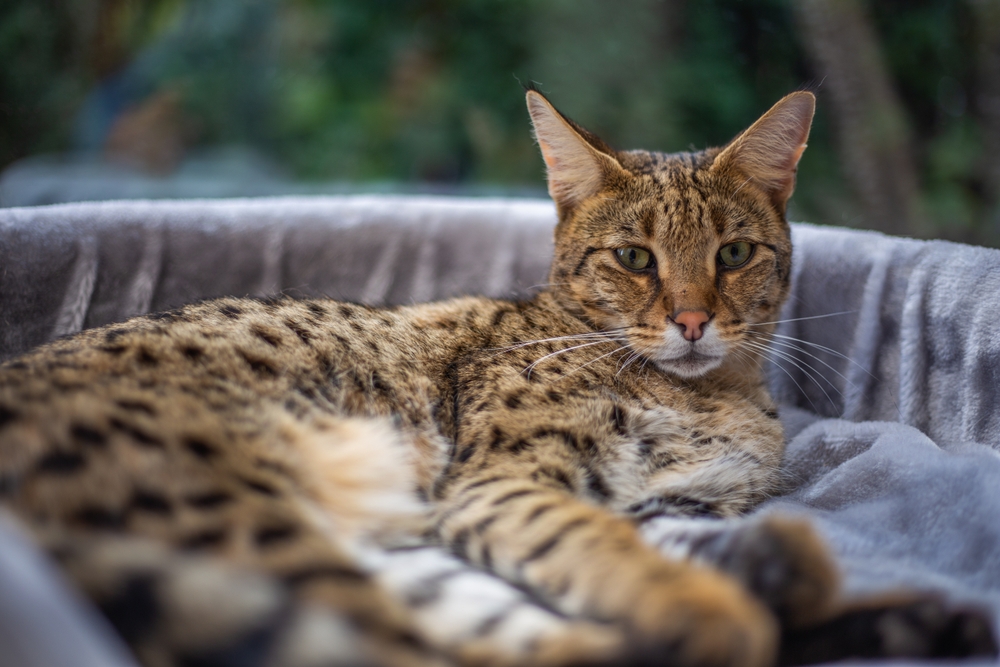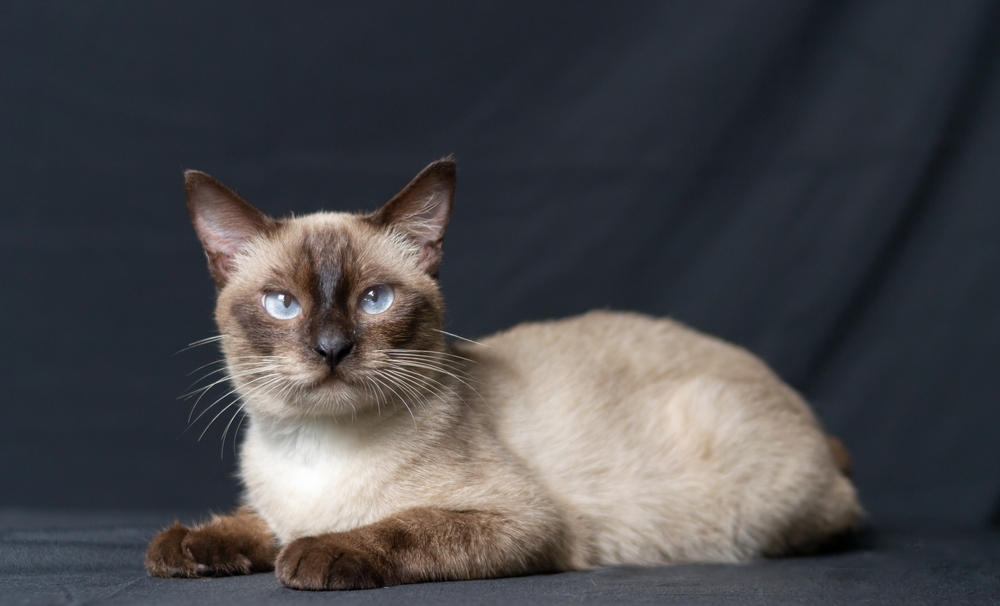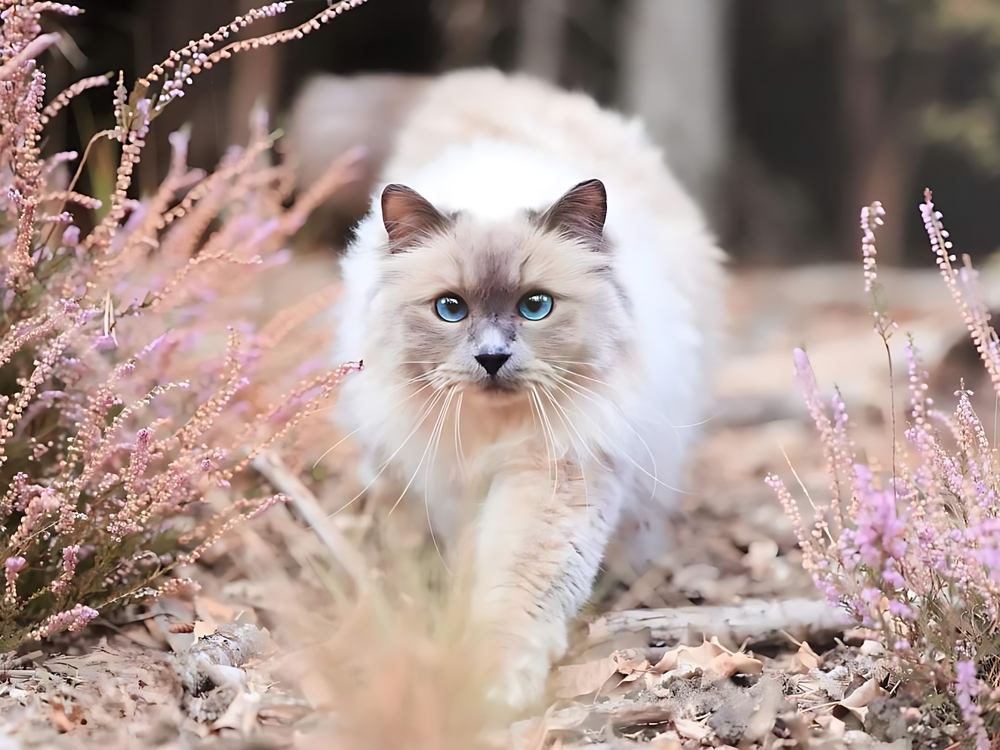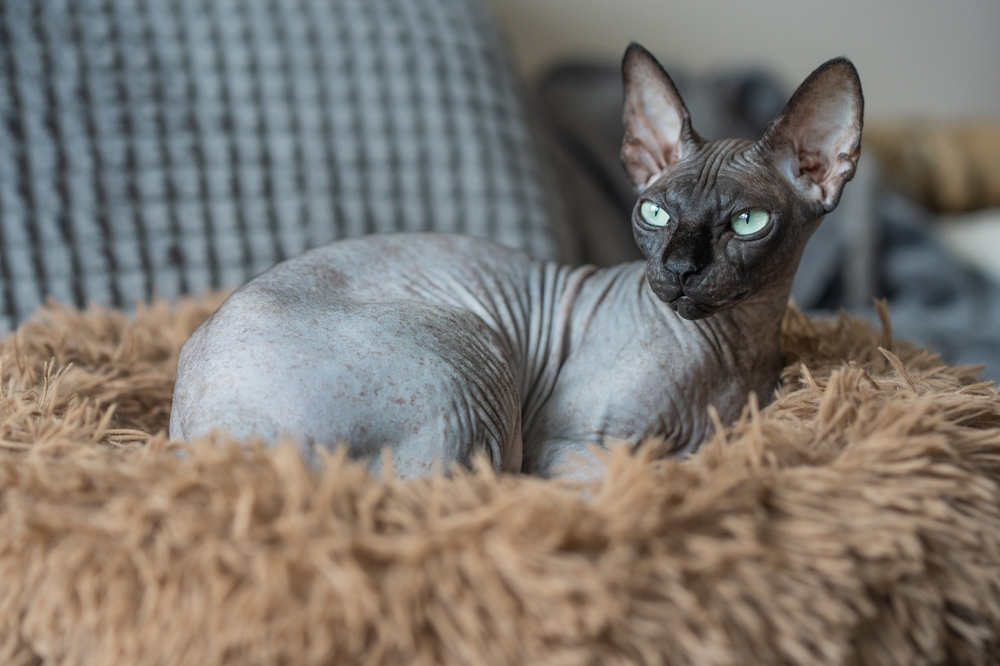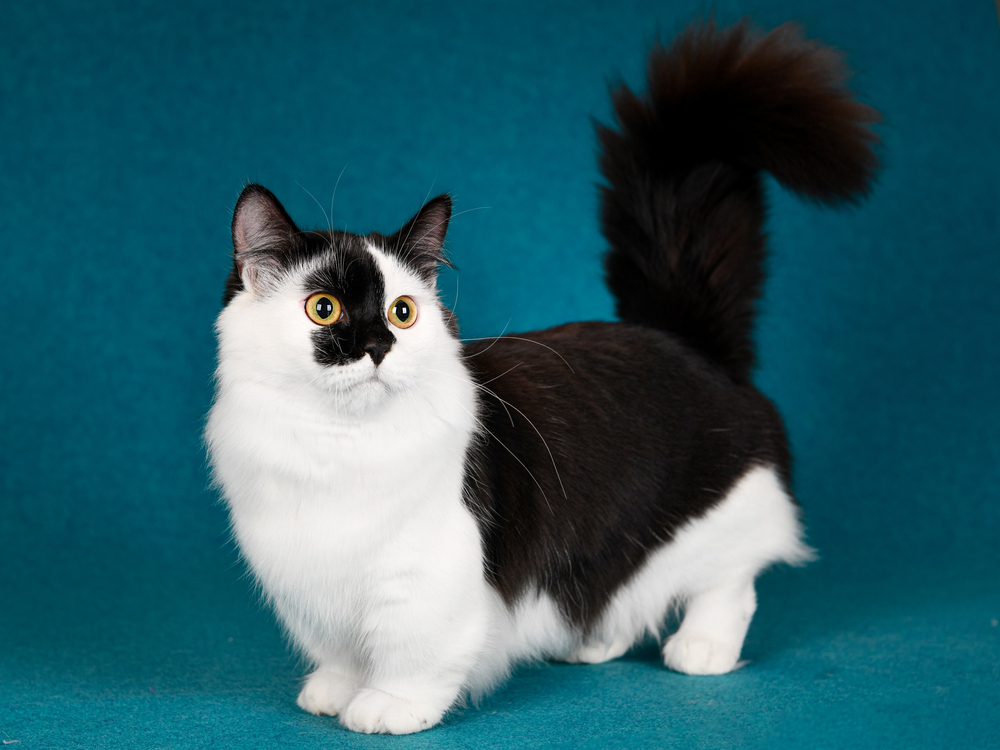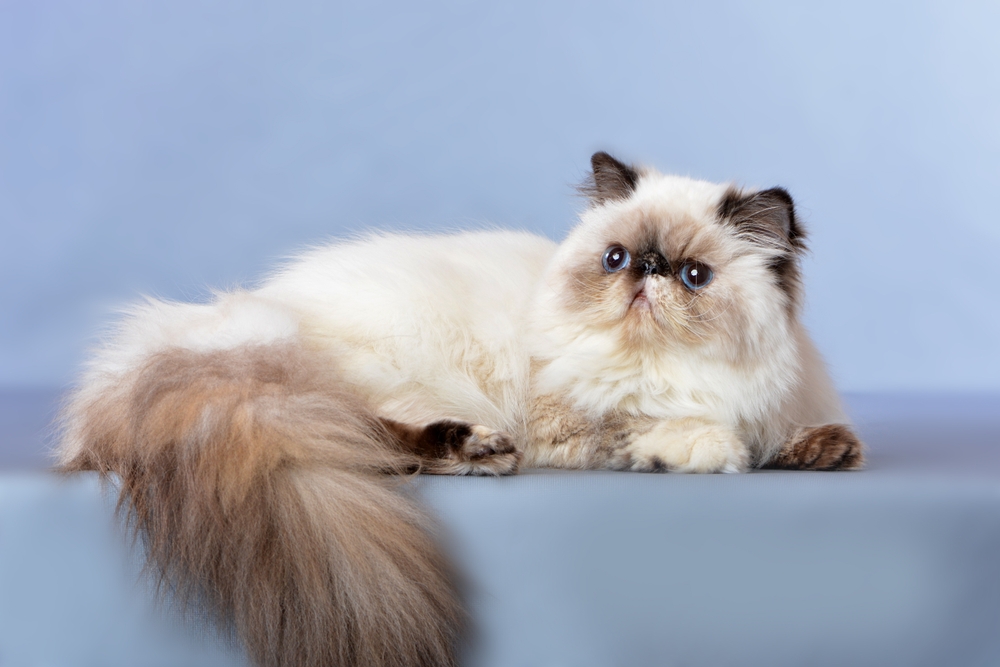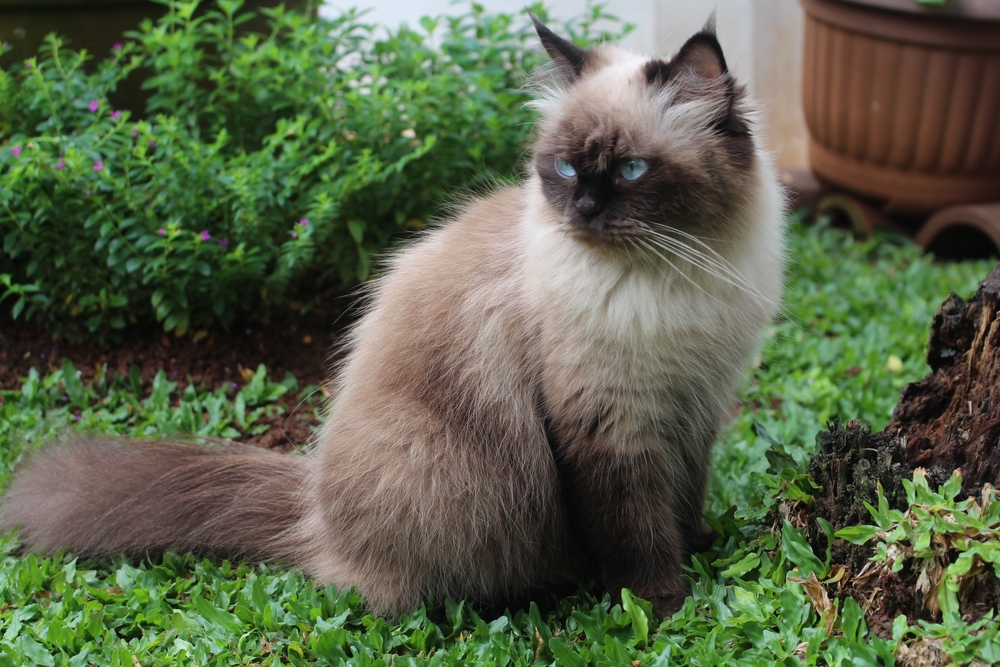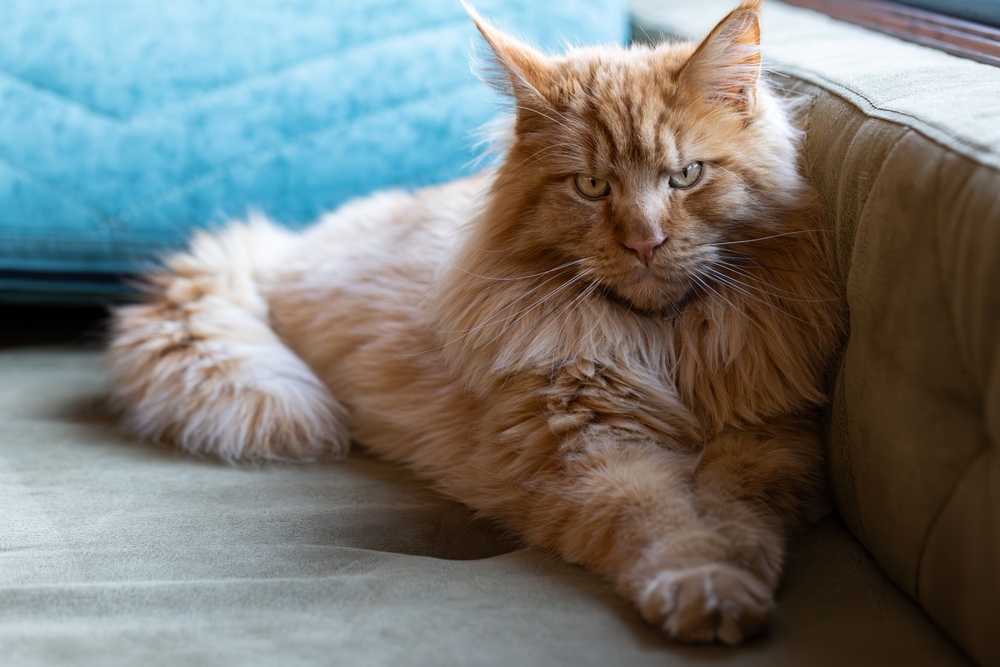The Toyger’s closest domestic relatives are the Bengal (contributing its exotic markings) and the tabby domestic shorthair (for the base coat pattern). In the wild, the Toyger is designed to resemble the tiger (Panthera tigris), though it has no direct wild ancestry beyond the Bengal’s link to the Asian leopard cat.
About
The Toyger is a modern cat breed developed to resemble a miniature tiger while retaining the affectionate temperament of a domestic companion. Medium in size, the Toyger has a muscular, athletic build with a long body, sturdy legs, and a powerful stance. Its coat is short, dense, and soft, featuring bold vertical stripes on a warm orange or golden background that closely mimic the pattern of a wild tiger. A rounded head, small rounded ears, and strikingly vivid eyes complete its exotic yet approachable look.
The Toyger (Felis catus), of the family Felidae, was first developed in the United States in the 1980s by breeder Judy Sugden. By selectively breeding Bengal cats with striped domestic shorthairs, she aimed to create a breed that celebrated tiger-like beauty while promoting awareness for tiger conservation. The breed was recognized by The International Cat Association (TICA) in the 1990s and remains relatively rare.
Toygers typically weigh between 7–15 pounds (3.2–6.8 kg), with males generally larger than females. Their coats require minimal grooming, as the short fur does not mat, but regular brushing helps maintain shine and reduce shedding.
Personality-wise, Toygers are intelligent, playful, and highly social. They enjoy interactive activities such as fetch, puzzle toys, and even leash walking, making them one of the more dog-like cat breeds. They bond closely with their families, often following their humans around and engaging in conversations with soft vocalizations.
With their tiger-striped beauty, affectionate personalities, and energetic natures, Toyger cats combine the appearance of the wild with the devotion of a loyal domestic companion.
Physical Characteristics
Coat: The Toyger’s most defining feature is its short, dense coat patterned like a tiger’s. The coat is soft, plush, and shimmering with a glitter effect. It has bold, vertical, branching stripes over a rich golden-orange background. The markings are designed to mimic the stripes of a wild tiger, making the Toyger one of the most exotic-looking domestic cats.
Face: They have a medium-sized, rounded head with a strong chin and broad nose. Distinctive facial markings include dark lines extending from the eyes and “M”-shaped tabby markings on the forehead, contributing to their wild look. Their eyes are large, round, and typically a deep gold or green.
Body: Medium to large in size, muscular, and athletic with a long, low-slung body. They have strong shoulders and hindquarters, designed to give them a powerful, prowling appearance similar to a tiger in miniature.
Ears: Small, rounded at the tips, and set wide apart to emphasize the wildcat appearance.
Tail: Long, thick, and muscular, with bold dark rings and a rounded black tip.
Size:
-
Length: 18–22 in (46–56 cm) from head to base of tail.
-
Height: 10–12 in (25–30 cm) at the shoulder.
Weight:
-
Adult Female: 7–10 lbs (3.2–4.5 kg).
-
Adult Male: 10–15 lbs (4.5–6.8 kg).
The Toyger’s striped coat, muscular body, and prowling stance make it resemble a miniature tiger, while retaining the affectionate and manageable personality of a domestic cat.
Reproduction
Mating and Courtship:
Toygers typically reach sexual maturity at about 8–12 months of age, though breeders often wait until at least 12 months before mating to ensure full development. Queens in heat display typical feline behaviors such as rolling, rubbing, and loud vocalizations, while males respond with pursuit and calling.
Breeding Program Considerations:
The Toyger is a designer breed, created in the 1980s by crossing Bengal cats (with their wild Asian leopard cat ancestry) and domestic shorthaired tabbies. Breeding focuses on strengthening the tiger-like coat pattern and body shape. Responsible programs may outcross with Bengals or other domestic cats to preserve health and genetic diversity.
Gestation:
The gestation period lasts about 63–65 days (roughly 9 weeks).
Birth of Kittens:
Typical litter size is 3–5 kittens, though litters can range from 2 to 7. Kittens are born with faint or indistinct tabby markings that become more defined as they grow.
Care and Nurturing:
Kittens are born weighing about 3–4 oz (85–113 g), blind and fully dependent on the mother. Toyger queens are attentive and protective, keeping their kittens clean, warm, and well-fed.
Weaning and Social Development:
-
Eyes open around 7–10 days.
-
Walking begins by 3 weeks.
-
Solid food is introduced by 4–5 weeks, with full weaning complete by 8–10 weeks.
-
Stripes and body proportions continue to develop, with the full tiger-like appearance becoming more defined as the kitten matures.
Independence:
By 12–14 weeks, Toyger kittens are ready for adoption. Breeders often keep them until at least 12 weeks to ensure proper health, coat development, and early socialization.
The Toyger’s reproductive cycle is typical of domestic cats, but the focus on enhancing tiger-like features makes careful selective breeding essential to maintaining the breed’s unique look while preserving health.
Lifespan
Lifespan in the Home:
Toygers typically live 12–16 years, with many reaching 15–18 years when provided with good nutrition, veterinary care, and a safe indoor environment.
Lifespan in Outdoor or High-Risk Settings:
If allowed outdoors, Toygers may live only 6–10 years due to risks such as traffic, predators, diseases, and theft (since they are a rare and valuable breed).
Factors Affecting Longevity:
-
Genetics: As a newer breed, Toygers are generally healthy with few inherited issues, though they may be prone to conditions common in domestic cats, such as hypertrophic cardiomyopathy (HCM).
-
Diet & Weight Management: A protein-rich diet and careful portion control are important to prevent obesity, which can shorten lifespan.
-
Preventive Care: Routine veterinary checkups, dental hygiene, and vaccinations help maintain long-term health.
-
Environment: Toygers thrive as indoor cats with enrichment such as climbing trees, puzzle feeders, and interactive play to satisfy their energy and curiosity.
Notable Longevity:
With excellent care, some Toygers have been reported to live close to 20 years, though this is less common.
The Toyger’s healthy genetic foundation, combined with its active yet affectionate nature, supports a long lifespan, especially when kept as a cherished indoor companion.
Eating Habits
Diet:
Toygers are obligate carnivores and thrive on a high-protein, meat-based diet. Premium commercial cat food—wet, dry, or a balanced mix—is recommended. Wet food supports hydration and kidney health, while dry kibble can help with dental maintenance. Some owners may also feed a carefully balanced raw diet to mimic natural nutrition.
Feeding Frequency:
-
Kittens (up to 6 months): 3–4 meals daily to support rapid growth and energy needs.
-
Adults (6 months–10 years): 2 meals per day, portioned to maintain lean muscle mass.
-
Seniors (10+ years): Smaller, more frequent meals, often with senior-specific formulas to support joint, heart, and kidney health.
Special Considerations:
-
Toygers are muscular, active cats, requiring nutrient-dense meals to fuel their athletic build.
-
Portion control is important to avoid obesity, particularly in less active indoor cats.
-
Omega-3 and omega-6 fatty acids help maintain their short, glossy, tiger-striped coat.
-
Fresh, clean water should always be available, ideally from a fountain to encourage hydration.
Treats:
Healthy treats such as freeze-dried meat, small amounts of cooked chicken or fish, or commercial cat treats are acceptable, but should make up no more than 10% of daily calories.
Feeding Enrichment:
Toygers are intelligent and playful, so puzzle feeders, slow-feeding bowls, or food-dispensing toys work well to stimulate their minds and mimic hunting behaviors.
The Toyger’s eating habits reflect its energetic, muscular nature—they thrive on protein-rich, portion-controlled meals paired with feeding enrichment to keep them lean, healthy, and engaged.
Uniqueness
Miniature Tiger Appearance:
The Toyger was specifically developed to resemble a miniature tiger, with bold vertical stripes, a golden-orange background coat, and a low, prowling body stance.
Glittered Coat:
Their short, dense fur often carries a natural glitter effect, making the coat shimmer in the light—a rare trait among domestic cats.
Selective Breeding Origins:
The Toyger is a modern designer breed, created in the 1980s by crossing Bengal cats (descendants of the Asian leopard cat) with domestic tabbies. The goal was to mimic the tiger’s look in a domestic-sized companion.
Wild Look, Gentle Nature:
Despite their exotic, wildcat appearance, Toygers are known for their calm, affectionate, and friendly personalities, making them excellent family pets.
Intelligent and Trainable:
They are highly intelligent and can be trained to walk on a leash, play fetch, or learn tricks, much like Bengal and Savannah cats.
Rare and Recognized:
The Toyger is still considered a rare breed, recognized by The International Cat Association (TICA) but not yet by all major cat registries, making them prestigious and sought after.
Conservation Awareness Symbol:
The Toyger was partly developed to raise awareness of tiger conservation, symbolizing a connection between wild tiger preservation and domestic cat companionship.
The Toyger’s combination of tiger-like beauty, shimmering coat, gentle temperament, and symbolic conservation message makes it one of the most unique and meaningful cat breeds in the world.
Be the First to Share Photos of This Species.
FAQ’s
1. What is the closest species or breed to the Toyger Cat?
2. How does the Toyger Cat compare to other cats?
Toygers stand out for their tiger-like stripes and glittered coat, traits not found in most breeds.
They are calmer and more family-friendly than the high-energy Bengal, yet more playful and interactive than laid-back breeds like the Persian.
They are intelligent and trainable, sharing dog-like qualities similar to the Savannah and Siamese, but with a more approachable temperament.
3. What national parks or regions provide the best chance to see a cat resembling the Toyger?
Since the Toyger was designed to look like a miniature tiger, the best way to see its wild counterpart is to observe tigers in their natural habitats:
-
Ranthambore National Park, India – One of the best places to see Bengal tigers in the wild.
-
Bandhavgarh National Park, India – Known for its high density of wild tigers.
-
Chitwan National Park, Nepal – A prime habitat for the Bengal tiger.



































































